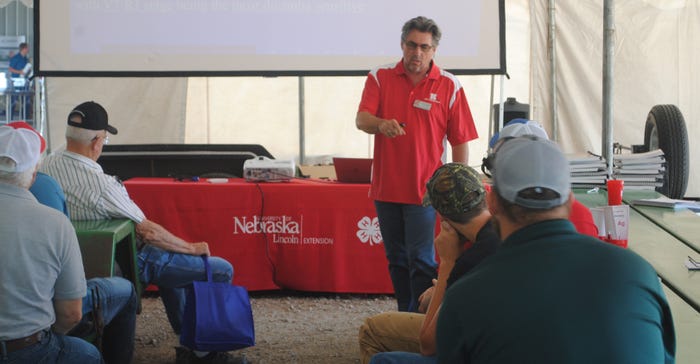
The University of Nebraska Haskell Agriculture Laboratory has remade itself in many ways over the past two years.
While the laboratory near Concord, Neb., has been ground zero in recent decades for groundbreaking research in cattle and swine feeding, long-term nitrogen studies, organic and weed flaming research and development, agroforestry, irrigation engineering, and many aspects of integrated pest management, the facility found itself in the crosshairs of university budget concerns a couple of years ago.
At that time, the 480-acre HAL site already had begun a transformation that still includes crucial agriculture research, but it has evolved into a campaign to reach out to farmers and families in the region to teach multiple generations more in the areas of science, technology, engineering, agriculture and mathematics.
Last year, HAL staff members hosted their first Family Field Day in late August, with about 450 northeast Nebraskans attending. The new format focused on STEAM replaced the popular VIP field tours that previously had been held at HAL each August.
STEAM activities for youth and adults were the main events for this year’s follow-up field day July 24, says Bill Kranz, associate director of the Northeast Extension District.
“We made a much stronger and more timely effort to invite vendors in preparation for this year’s event,” Kranz says. “We work directly with some of these vendors on a day-to-day basis, and others decided to provide support for the event this year because they heard about last year’s event."
Significant support was received from Nebraska Corn Board and Nebraska Soybean Board, providing funding for the meal at the event. “We are very grateful for their support,” Kranz says.
The field day included educational trailers, field tours and exhibits, along with information about a new workforce development effort related to the feedlot operation — in conjunction with Nebraska College of Technical Agriculture in Curtis, Neb., Wayne State College and UNL.
“Partnerships have been strengthened with many agribusinesses that have stepped up in a big way to make the event successful with monetary support,” Kranz says. “Our Nebraska Extension educators at the county level have made this a priority, so many of their associated programs were brought into the event, which increased the number of booths."
The Science Literacy group from Lincoln, Neb., including Jenny Keshwani and Erin Ingram, brought several of its students to demonstrate some of the things it is involved with on campus that cultivate science literacy.
The HAL planning committee and summer student-workers helped bring the event to fruition. “The public responded again this year, to bring the whole family to this event,” Kranz says. “Cross-generation learning is one of the major outcomes we strive for, and all indications are that we have been successful in opening that line of communication.”
For youth attending, Kranz notes that the Mobile Beef Lab trailer, shooting sports trailer and a bicycle booth that ran a blender were the popular stopping points.
For adults, a live question-and-answer panel of the experts from Backyard Farmer on Nebraska Educational TV, along with the agriculture research presentations, were the most visited sites.
Other speakers included Mike Boehm, UNL vice president and vice chancellor of the Institute of Agriculture and Natural Resources, and Marysz Rames, president of Wayne State College, who spoke on the Northeast Education Compact.
Learn more about the research and programs being conducted at HAL by contacting Kranz at [email protected].
About the Author(s)
You May Also Like






